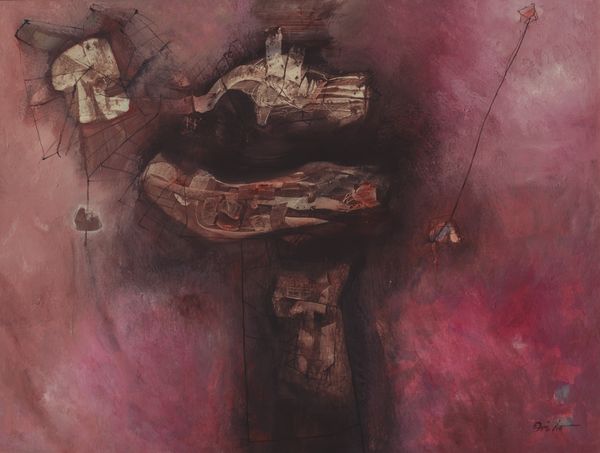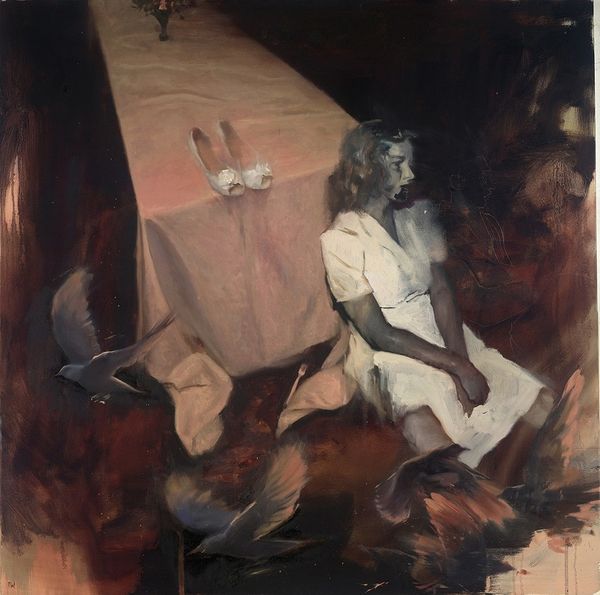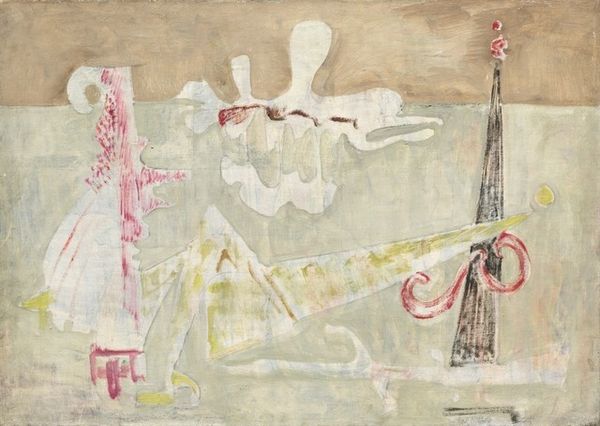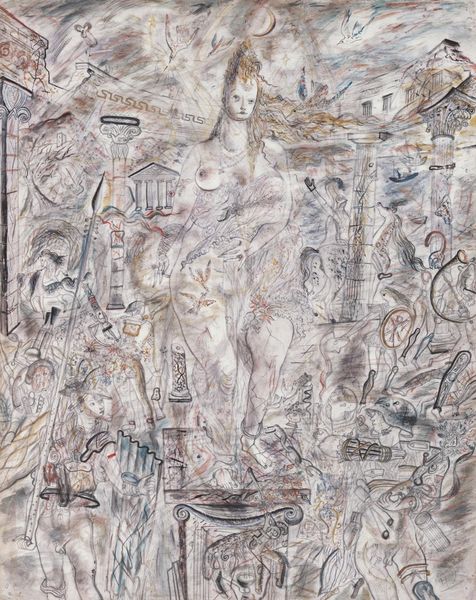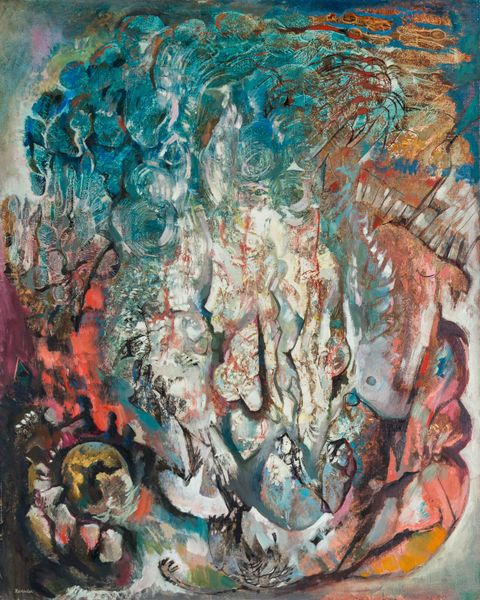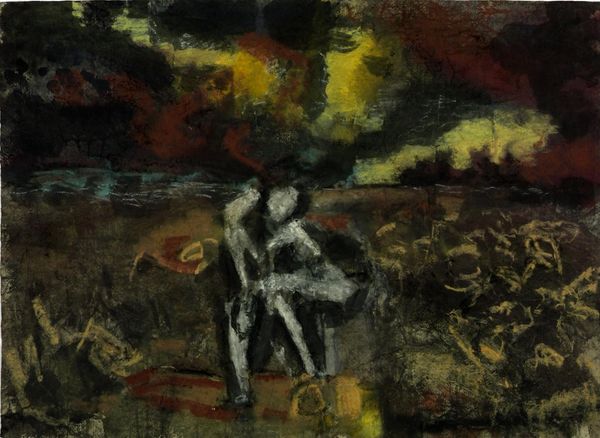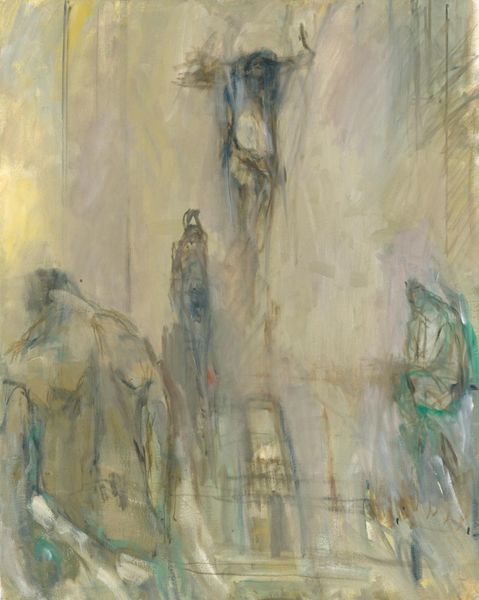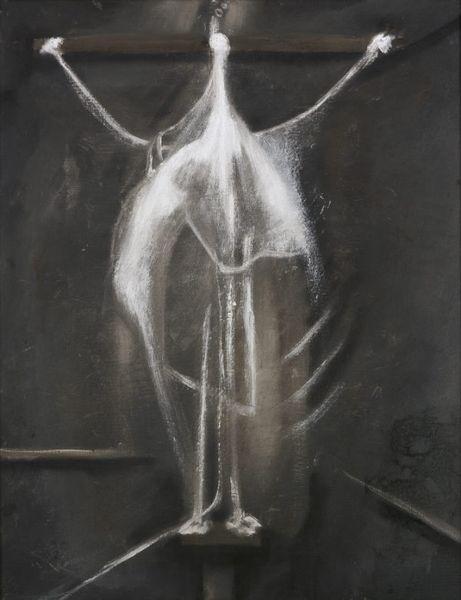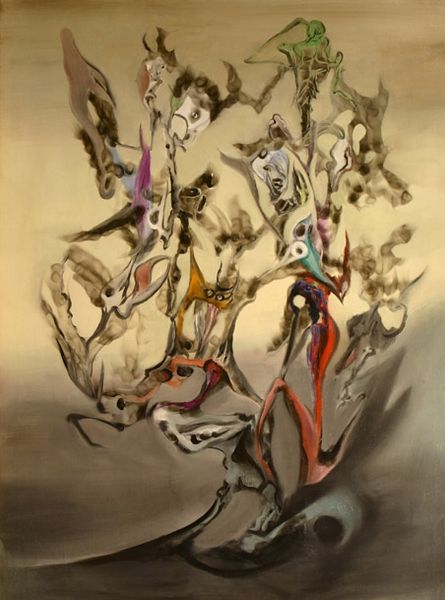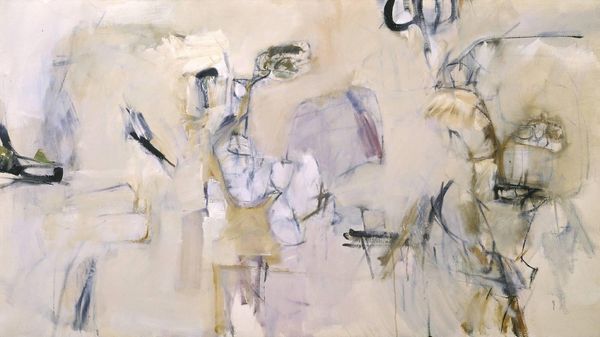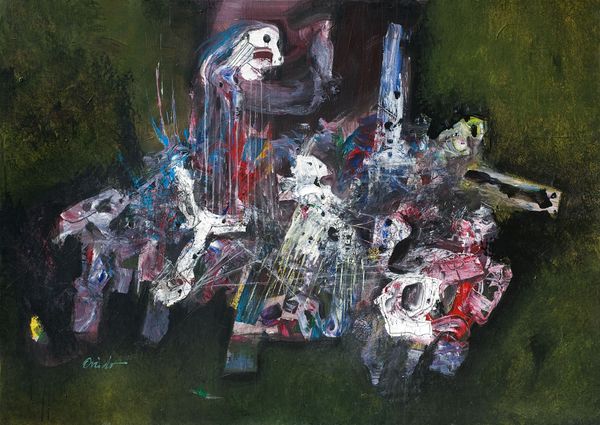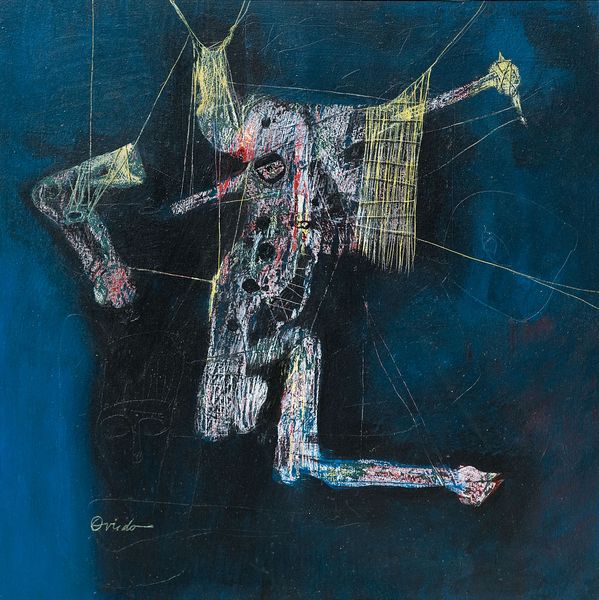
Dimensions: support: 1302 x 972 mm
Copyright: © DACS, 2014 | CC-BY-NC-ND 4.0 DEED, Photo: Tate
Editor: This is Dorothea Tanning's "A Mi-Voix," currently housed at the Tate. It's quite large, rendered in muted tones. There is a sense of being suspended in time. What narratives do you see embedded in this work? Curator: The title translates to "In a Half-Voice", and it speaks to the position of women in Surrealism. Tanning often explored the blurred lines between reality and dream, and this painting seems to capture a moment of subdued but palpable tension. Do you notice the figures' ambiguous forms and ghostly presence? Editor: Yes, they almost seem to be fading away. Curator: Exactly. This ambiguity can be interpreted as a commentary on the fluidity of identity, particularly female identity, within patriarchal structures. It challenges viewers to consider the unspoken power dynamics at play. Editor: That’s a perspective I hadn’t considered. It adds a whole new layer to the work. Curator: By engaging with the art in this way, we’re also uncovering the complex layers of historical and social context. Editor: Thank you! I’ll keep this in mind in my further investigations.
Comments
Join the conversation
Join millions of artists and users on Artera today and experience the ultimate creative platform.
tate 8 months ago
⋮
‘I just wanted to paint a white and grey picture that would still have colour in its veins as we have blood under our winter-white skin’, Tanning wrote of this work. Her engagement with surrealism began in the 1940s when she married Max Ernst. She has observed of herself: ‘as someone...who has chosen art, the making of it, the dedication to it, the breathing of it, this artist has pursued with a high heart that great aim; and has utterly failed to understand the pigeon-holing (or dove-coterie) of gender, convinced that it has nothing to do with qualifications or goals.’ Gallery label, October 2016
